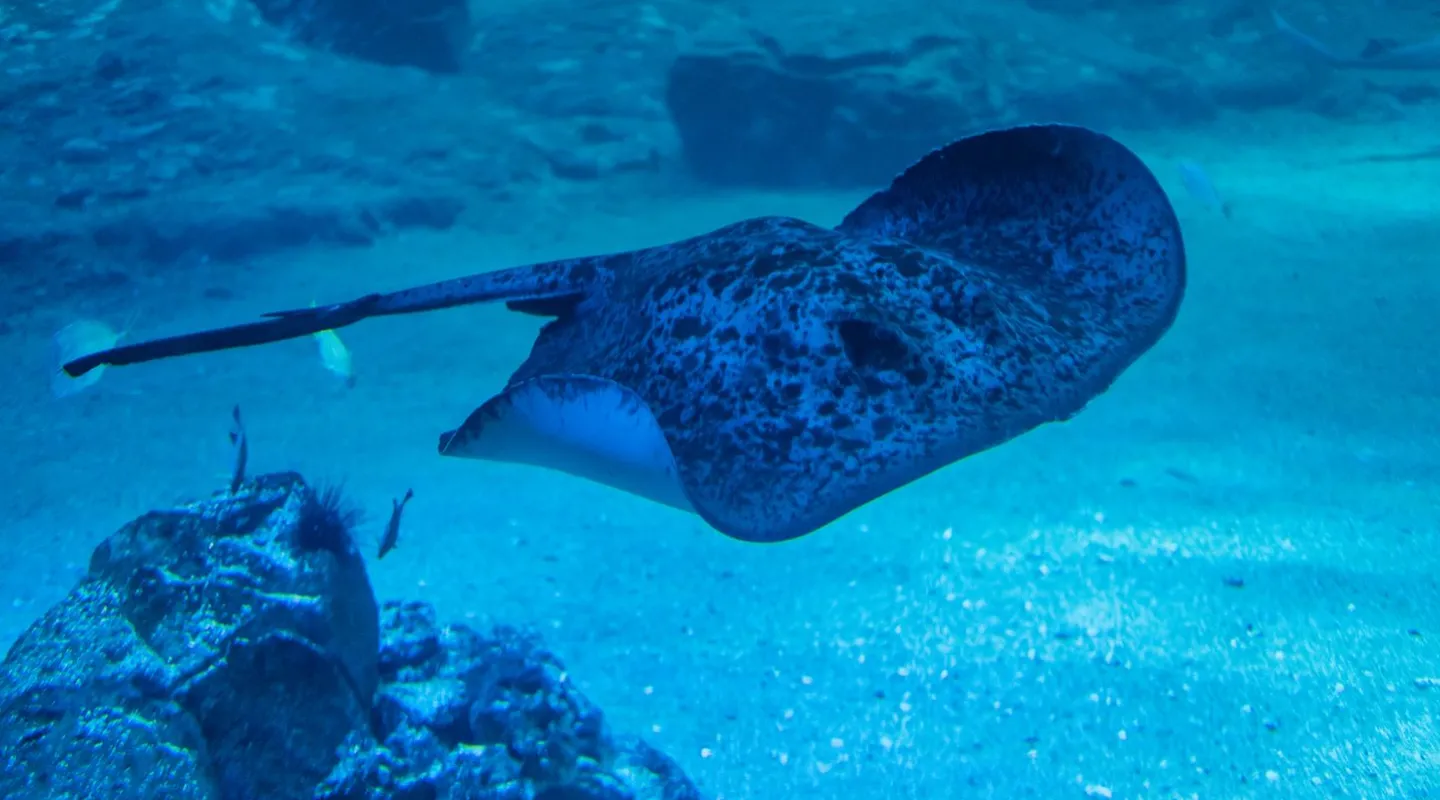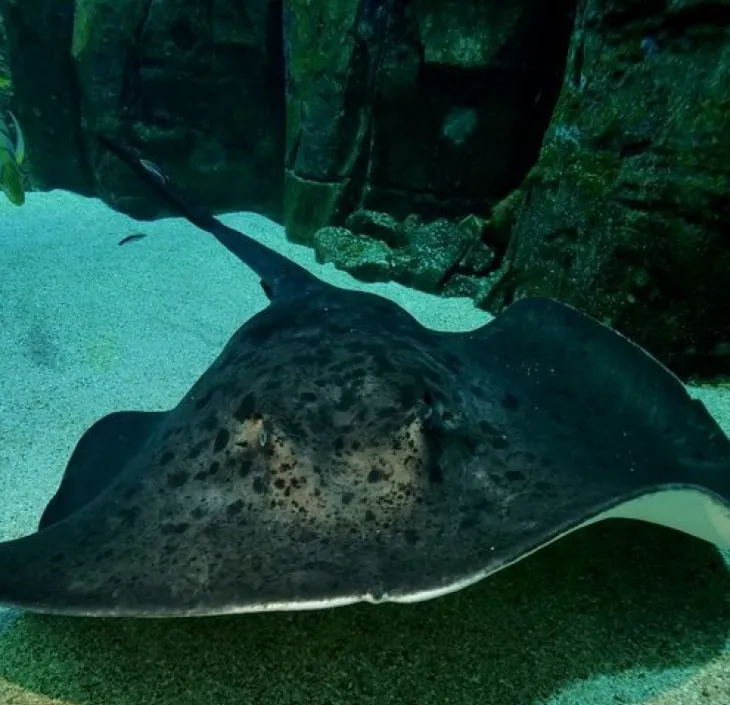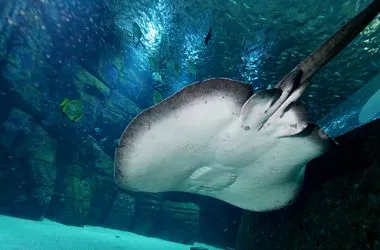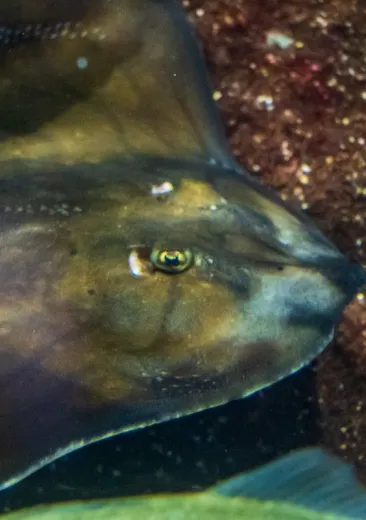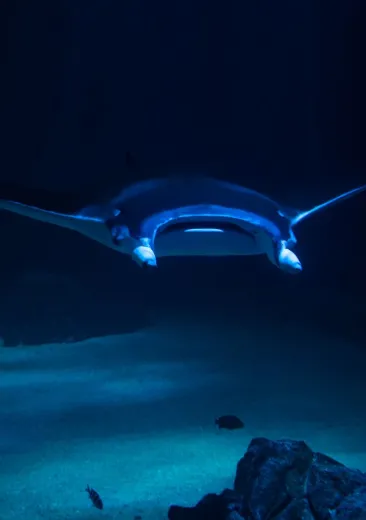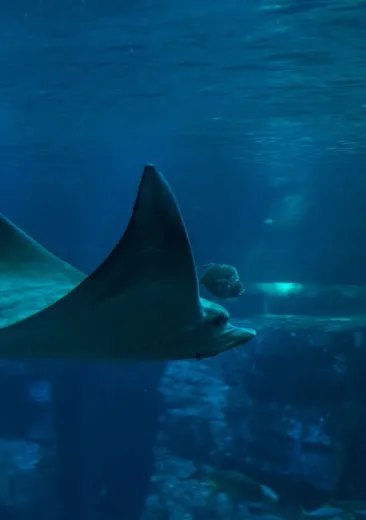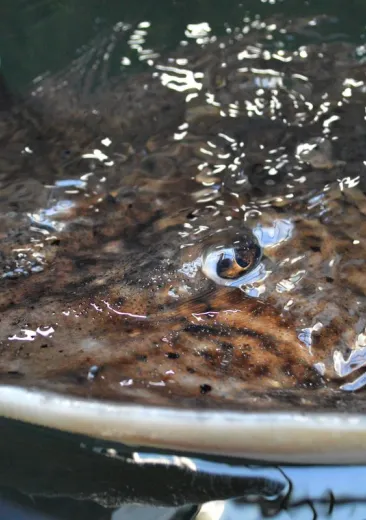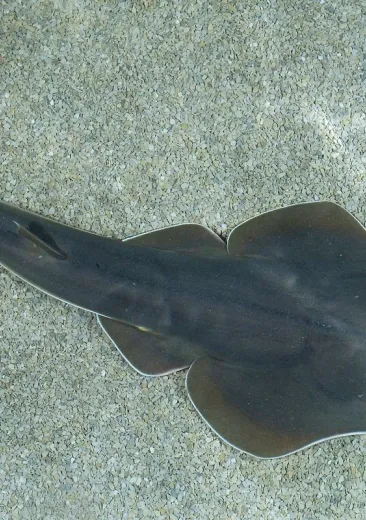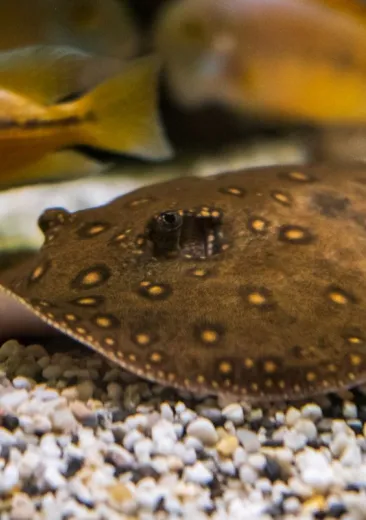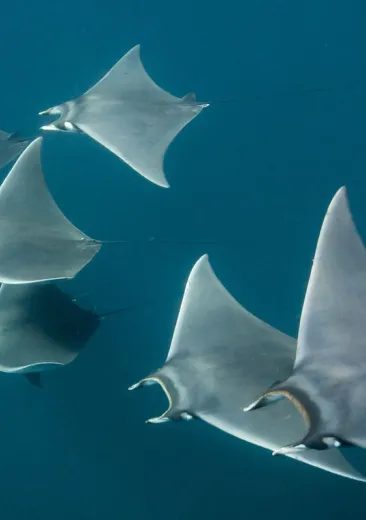The two giant blotched faintail rays in Nausicaá are males that are just over 7 years old. They come from the Den Blå Planet aquarium in Copenhagen, Denmark. Their arrival is a consequence of the cooperation within EUAC, the European Union of Aquarium Curators; animal exchanges are common between aquariums.
They can be found with the other rays in the large tank: the manta ray, the blackchin guitarfish, the eagle rays and the Atlantic pygmy devil rays in "The great ocean show" area in "JOURNEY ON THE HIGH SEAS". As they tend to live on the sea floor, you will need to be attentive to spot their silhouette on the sand of the large tank.
Where is the animal to be found?
Blotched fantail rays are found in the Red Sea, Indian Ocean and Western Pacific Ocean. They are more likely to live along the seabed, in lagoons, on the outer slopes of coral reefs, on soft seabeds or even near the shore.
How can it be recognised?
It is one of the largest rays in the world. The blotched fantail ray has a rounded body, like a thick disc, and a relatively short tail. Like other fantail rays, it has a poisonous spine on its tail.
What is distinctive about it?
The ray reaches sexual maturity when it reaches 1m/1.10m; it is ovoviviparous, i.e. the eggs are incubated and hatch inside the female's abdomen and a litter can comprise up to 7 baby rays.
Threat and protective measure
VU - vulnerable but declining. It is only protected when it lives in a protected marine area. Otherwise, there are no measures.
